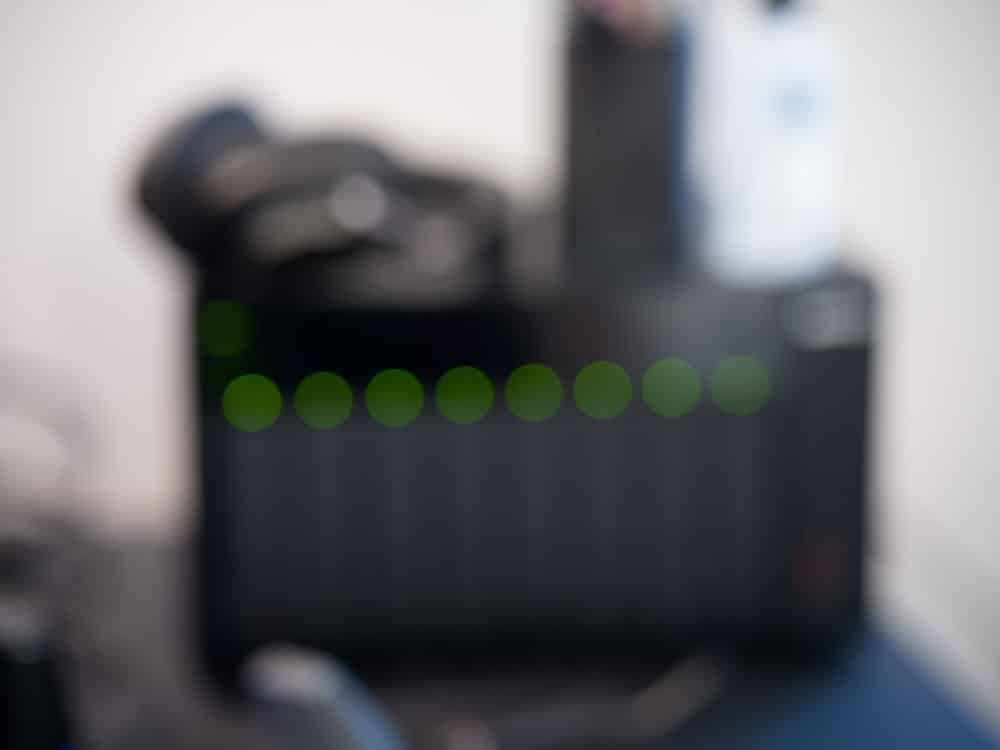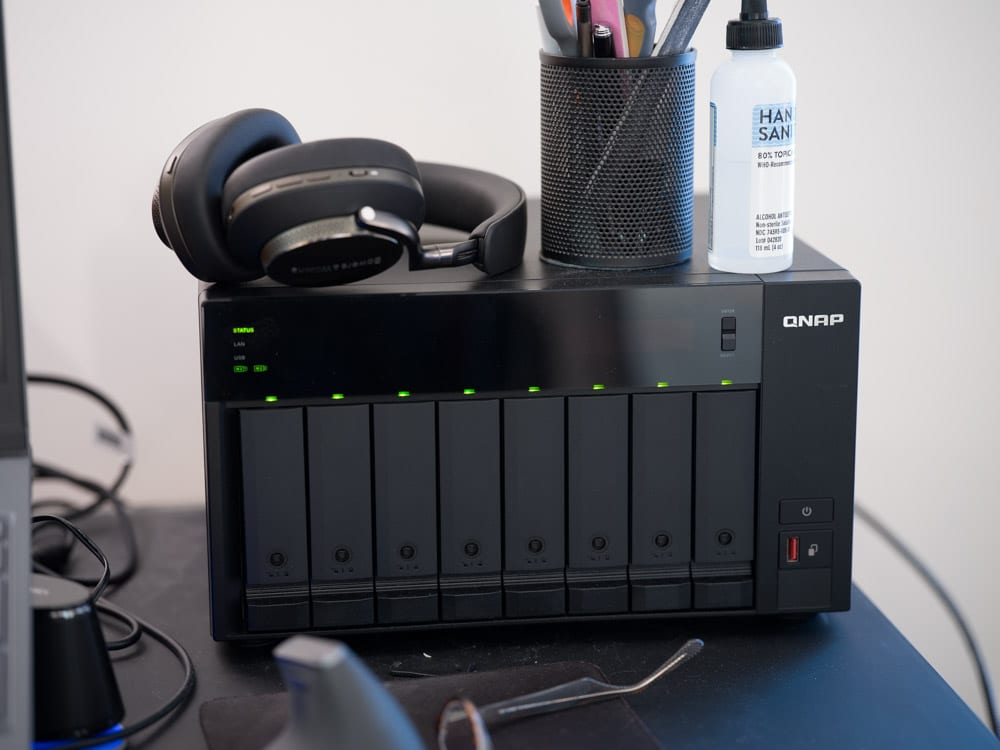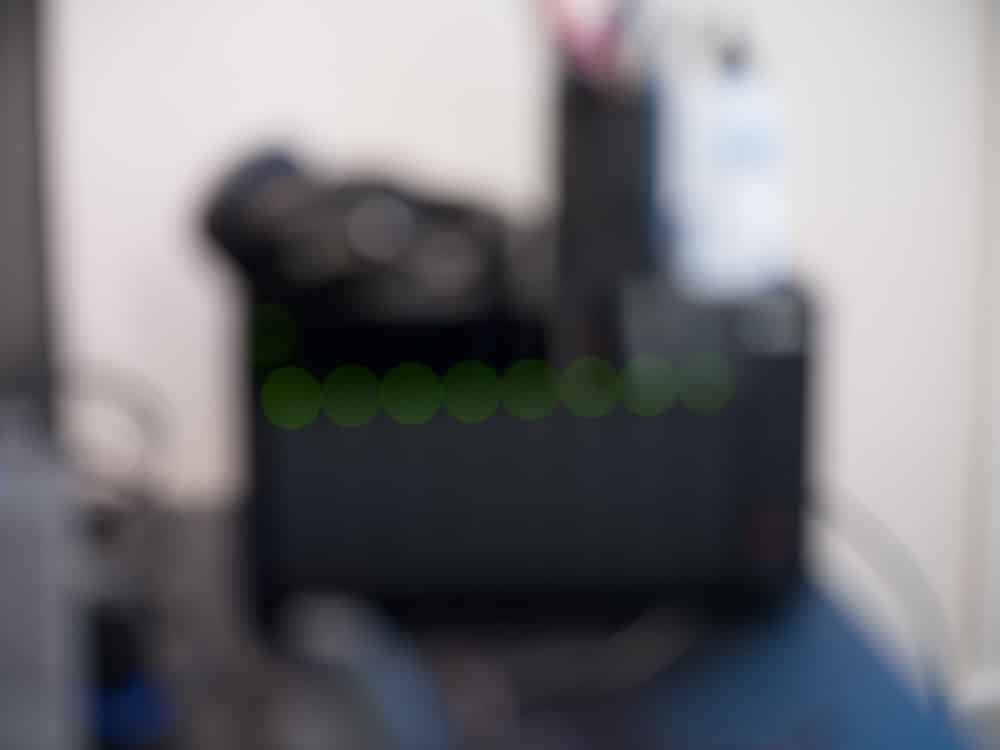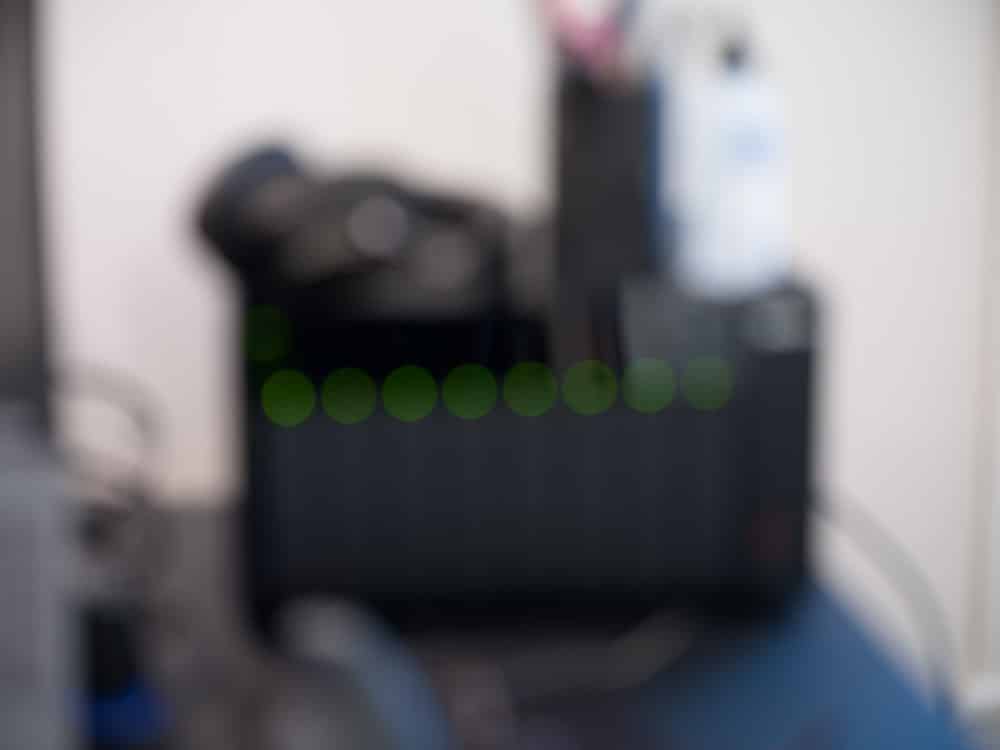This is the 46th in a series of posts on the Hasselblad X2D 100C camera and the XCD lenses. You will be able to find all the posts in this series by looking at the righthand column on this page and finding the Category “X2D”.
In informal testing the background bokeh of the Hasselblad XCD 90 mm f/2.5 V lens looked very smooth. I no longer have access to the artificial star I usually use for this kind of testing, but I improvised with a NAS box with disk activity lights. With the lens wide open and ISO set to 64, I made a series of exposures with the lens focus distance set from minimum focus distance to infinity.

The OOF bokeh balls are very smooth here.
And they stay smooth all the way to in-focus.

Mildly OOF, the balls are still smooth.
But as the focus distance moves well behind the lights, they begin to acquire more energy towards the periphery of the circle of confusion.

Not bad, though. Actually, better than not bad. Quite nice. And I don’t see any onion ring bokeh.
I think most anybody would be satisfied with this performance. Having the background out of focus is much more common than having the foreground OOF.






Gordon Ownby says
Jim –
Yes, those look very nice. Can you tell us the shutter speed(s) on those photos? (I ask because of the bokeh ball problem that I’ve experienced above 1/300 sec with the 2.8/65 ‘legacy’ lens.)
Thanks for posting those photos.
JimK says
Between 0.8 and 1.5 seconds.
Gordon Ownby says
Perfect.
Thanks for all that you do on this forum, Jim.
– Gordon
ArtY says
Indeed, I was comparing the bokeh of this 90V with the Nikon 135mm Plena and I almost threw up when I looked at the bokeh of the Plena. Something is quite wrong with the new group of Nikon lenses.
Not sure what happened to Nikon newer lenses. My gut feeling is that probably they have inserted too many aspherical elements into the tube. The designer seemed to be focusing all their efforts on resolution, compromising the bokeh.
JimK says
I really like the Plena bokeh.